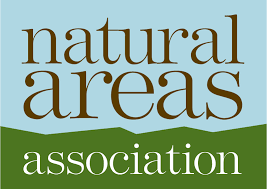Location
The Natural Areas Association is the only national, non-profit membership organization that is dedicated to the support and advancement of the community of natural areas professionals.
Together, we envision a world where science-based conservation is the bedrock of protecting the beauty and wonder of nature.
Our members work to protect and restore natural areas, ecosystems and landscapes, and include natural lands managers, natural resource managers, land trust staff and volunteers, biologists, ecologists, researchers, policy specialists, educators, students, and anyone with an active interest in environmental conservation and natural areas stewardship.
We:
- Support, nurture and advance the community of NA professionals
- Advance natural area conservation through access to the latest research findings, as well as emerging management techniques and conservation practices
- Promote an understanding and appreciation of natural areas, and the people who work to steward them
- Advocate for legislation that supports and funds initiatives important to natural areas
- Reflect the consensus of natural areas professionals through statements of policy
Members:
Resources
Displaying 1 - 5 of 12Simple Approaches to Improve Restoration of Coastal Sage Scrub Habitat in Southern California
Much of the coastal sage scrub habitat in Southern California that existed prior to European settlement has been developed for human uses. Over the past two to three decades, public agencies and land conservation organizations have worked to acquire some of the remaining lands for preservation. Many of these lands are degraded by past intensive livestock grazing, farming, and frequent fires, and the native flora has been replaced by weedy, exotic annual grasses and forbs, mostly of Mediterranean origin.
Do Container Volume, Site Preparation, and Field Fertilization Affect Restoration Potential of Wyoming Big Sagebrush?
Land management practices, invasive species expansion, and changes in the fire regime greatly impact the distribution of native plants in natural areas. Wyoming big sagebrush (Artemisia tridentata ssp. wyomingensis), a keystone species in the Great Basin, has seen a 50% reduction in its distribution. For many dryland species, reestablishment efforts have focused on direct seeding but achieved only minor success due to irregular seed germination and poor survival.
Conserving Biodiversity: Practical Guidance about Climate Change Adaptation Approaches in Support of Land-use Planning
As species' geographic ranges and ecosystem functions are altered in response to climate change, there is a need to integrate biodiversity conservation approaches that promote natural adaptation into land use planning. Successful conservation will need to embrace multiple climate adaptation approaches, but to date they have not been conveyed in an integrated way to help support immediate conservation planning and action in the face of inherent spatial uncertainty about future conditions.
Report in Brief: Assessing Botanical Capacity to Address Grand Challenges in the United States
Botanical capacity plays a fundamental role in solving the grand challenges of the next century, including climate change, sustainability, food security, preservation of ecosystem services, conservation of threatened species, and control of invasive species. Yet critical components of botanical education, research, and management are lacking across government, academic, and private sectors.
Seeds of Success: A National Seed Banking Program Working to Achieve Long-Term Conservation Goals
Seeds of Success (SOS) is a national native seed collection program, led by the US Department of Interior Bureau of Land Management in partnership with numerous federal agencies and nonfederal organizations. The mission of the SOS is to collect wildland native seed for long-term germplasm conservation and for use in seed research, development of native plant materials, and ecosystem restoration. Each year about 50 SOS teams are stationed across the United States to make seed collections following a single technical protocol.


